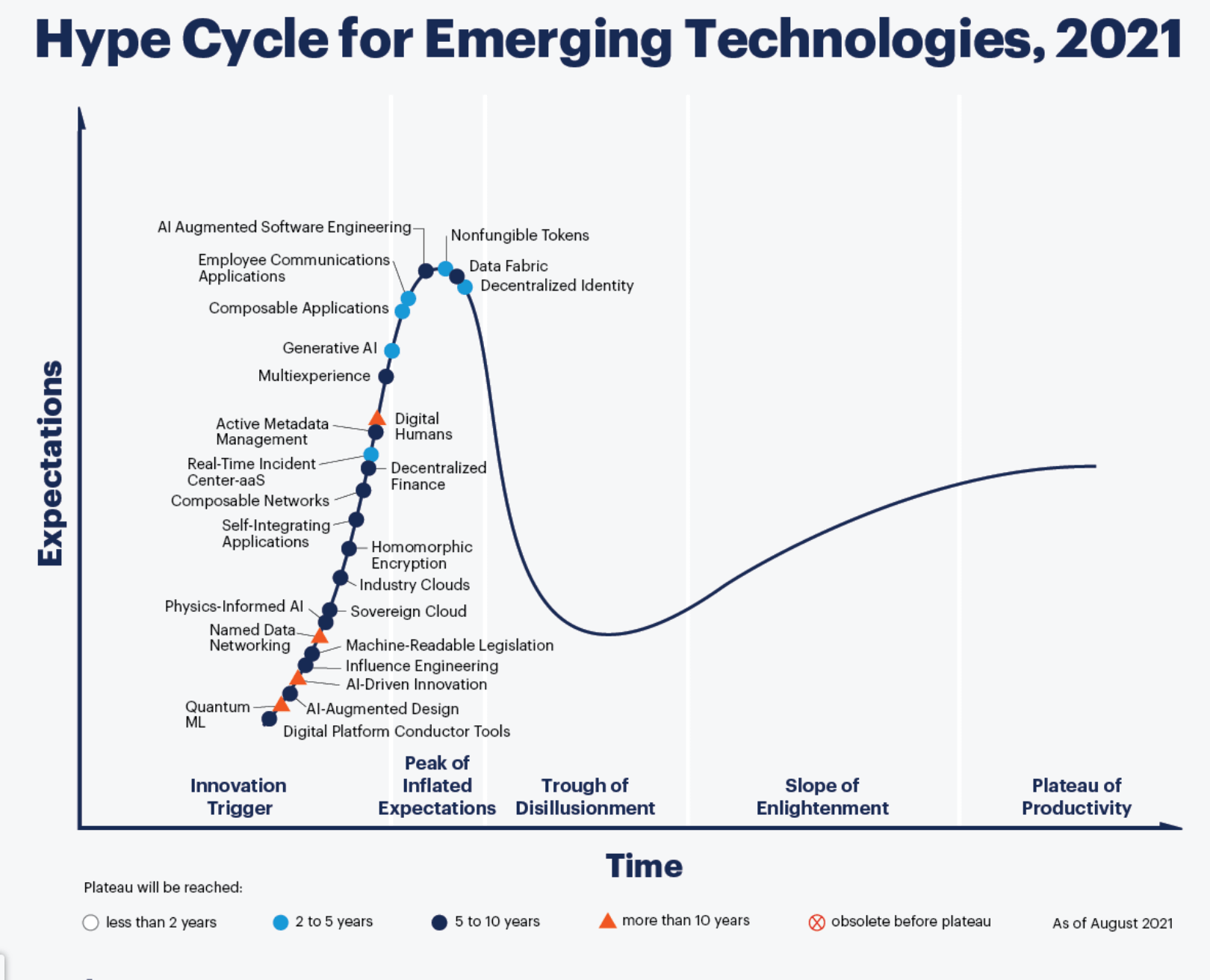



But they’re also being used to adjust the Nest and otherwise connect the Connected Home. I’ll concede that a lot of what those Virtual Assistants are being used for is answering questions like “who won the Superbowl in 2004?” and requests to play the Macarena. Plus Gartner has Virtual Assistants as 2-5 years. But both personally and professionally, I see a lot more adoption of Connected Home devices – Nest thermostats, Ring security doorbells. Sure, I think we all make a little fun of the refrigerator that calls you when you’re at the grocery store and tells you to bring milk home. Nor do I see any widespread disillusionment. Personally, I don’t see the Connected Home being that far in the future. Connected Home, seen by Gartner as 5-10 years in the future, appears to be in the downward slide toward the Trough of Disillusionment. Even those technologies that are 5-10 years out from primetime tend to be household words – Smart Robots, Silicon Anode Batteries, Blockchain – at least among techies. Not surprisingly, the technologies that are closest to reaching the point where they’re actually fully viable, broadly adopted, and having an impact on productivity are the ones that are most familiar to us: 5G and Deep Neural Network ASICs, Deep Neural Nets (Deep Learning) and Virtual Assistants. Here’s a look at their most recent Hype Cycle for Emerging Tech. After all, we need to make sure that we’re prepared for whatever’s coming – even if it isn’t coming overnight. In their Hype Cycle, they place new technologies along a somewhat amusing continuum that extends from the inception of a technology breakthrough – the Innovation Trigger – to the Peak of Inflated Expectations (this is the hype in Hype Cycle), through the Trough of Disillusionment and on to the point where the hype is at least partially realized (the Plateau of Productivity).Īlthough we don’t tend to get caught up in hype, we’re always interested in looking at emerging technologies and in understanding how their perceived in the market. Gartner has an interesting way of looking at emerging technologies.


 0 kommentar(er)
0 kommentar(er)
